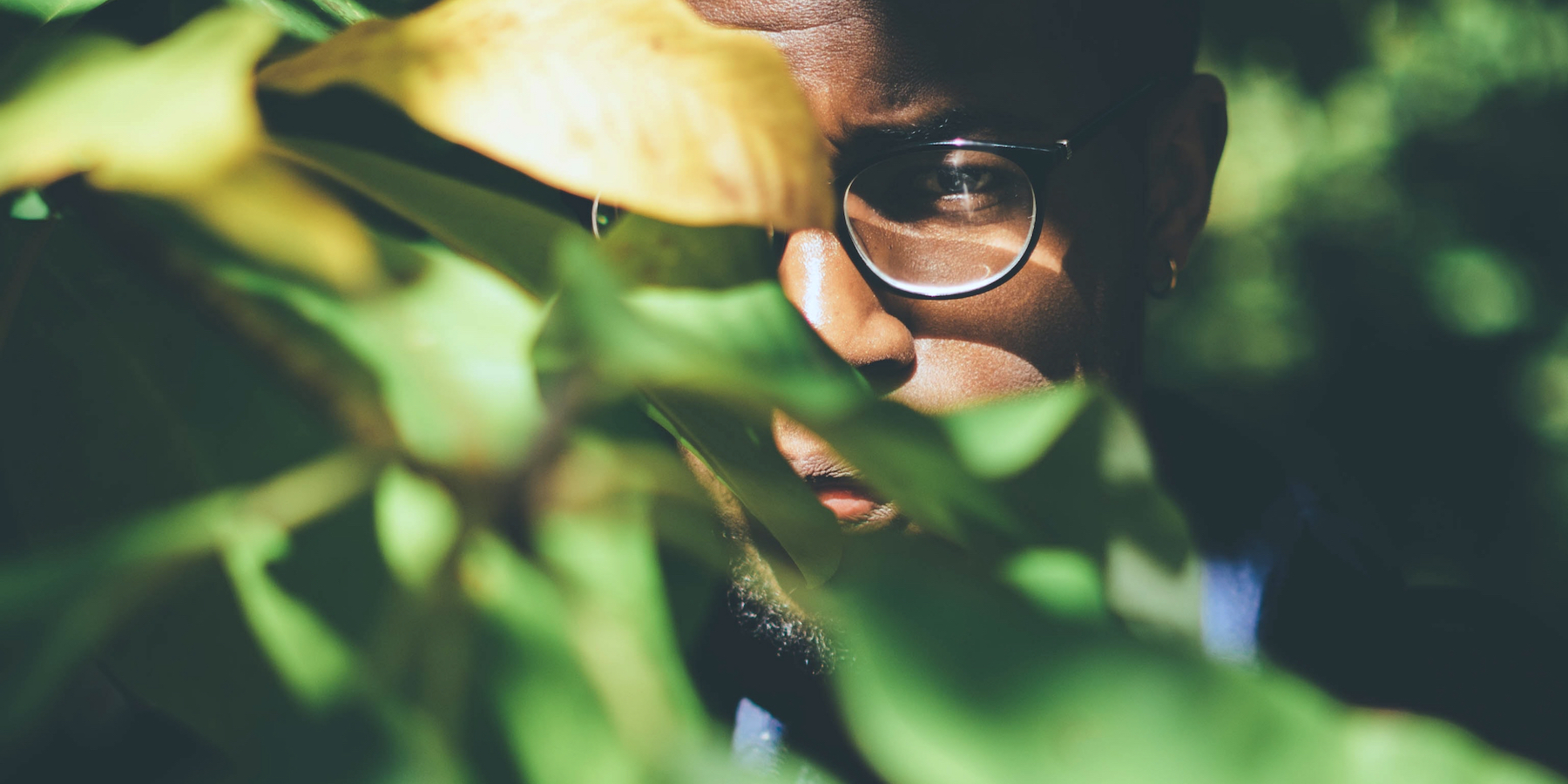This is a transcription of a talk by Christian Fanli Ramsey about being at home in the world and feeling connected. If you rather listen than read, play the audio below:
- The Art Of Non-Discrimination Christian Fanli Ramsey 28:24
What I want to talk about today is being at home in the world. What do we mean by home? What does it mean to be at home with myself? Upon reflecting on this, it has to do with this sense of belonging where you are, the sense of security and safety.
For me, there is a kind of warm temperature to being at home. And I think it’s quite easy to feel not at home. That is probably the more typical experience.
What does it mean to feel like you’re not at home in the world and to feel this sense of dis-ease. The sense that there’s a kind of background neurotic layer of just “it’s okay, it’s not great”. There’s this sense that you need to grab onto things. Its subtle ways of showing up is when we are often grasping things. I have a experience in my life where I was listening audiobooks and non-stop and studying non-stop. And it was quite fun. But I began to notice that there was this subtle motivation. There was beyond gaining knowledge. I couldn’t really stand the silence of just sitting with myself. The sense that I needed to do something, I needed to grab on to something external in order to feel sober.
I kind of started off with my search for home. And this started a long time ago. I was apparently born in Corpus Christi, Texas. And I say apparently because I don’t have any recollection of the place. It’s supposedly on the seaside, which is quite nice to know that I was born near seaside. And quickly, probably by the time I was one or two, I was orphaned. And then I went into foster care and by the time I was 16, I think, I had lived in eight different families, more or less. I’ve lived in families where getting a 39 cents cheeseburger on Wednesday nights was expensive. So very poor families. And I’ve also lived with very rich families where smuggling in two monkeys from Nevada that cost a fortune back to California was what they would call fun. So, I’ve also lived in quite extravagant families.
Across all those families, they are also what you would call different culturally. I have lived in a, traditionally speaking, Filipino family, I’ve lived in a Mexican family. I’ve lived in an African-American family, a white family, a British Irish family, an Indian family. We often think that that is a way to find differences. In one family picking up a fork and eating was perfectly appropriate. And in another family eating with your hands was appropriate. And then if I went back and use my hands in one family that was seen as barbaric and using a fork was seen as pretentious. I was really confused.
I went through each of these families living with them. And there were other kids that were living there, some biological, some foster, who suffered much more than I did. I want to make it clear that I think I am a very lucky person. A lot of times their suffering stemmed from this distinction between the real family and the fake family or the temporary family. And seeing that when they were living in the family with me that wasn’t their biological family, they felt like they needed to get out of there as soon as possible. But I never felt that sense of needing to go back to a real family. And I didn’t have a sense that there was such a thing as a real family. And in certain ways that might be saddening, but I actually felt like it saved me from a lot of suffering that I saw on these other children.
As I watched them suffer from having this belief that these parents, these new parents were not good enough, that there was something greater, that they needed to get back to this authentic, real place, I think I started to see at a very young age how these ideas were parasitic. At a young age, I think I quickly began to adopt whatever. I felt very loose in my identity. And because of this, I have the opportunity to really begin to look for my true home. And to be able to realize that my true home is not limited to any one family, or to any one location, race, sex… Any identity that we usually identify with and find belonging with. I was able to see at a young age that there was something greater, that I could feel at home in the world, no matter what family I was in and I could adopt whatever it is that their values were.
I could begin to see that within myself there was what I first thought were contradictions. Because I came from a British family and they talk this way. And then I went to this other family where they had a different way of talking. I constantly felt like I was contradicting myself.
Eventually, once that breakthrough started to happen, I started to see that I cannot claim any of these identities. I cannot claim that I am British, that I am white, that I am black, that I am Mexican, that I am Filipino. It is more of the case that I am all of these things within me, that I contain multitudes. Seeing that in myself was the only way for me to not contradict myself. What I discovered was kind of the art of non-discrimination. Not in the sense of social activeness, but more in the sense of living.
In order to be at home in the world, you must practice the art of non-discrimination. And the way to do that is to begin to look at things at a much deeper level than we usually do.
And so, just giving a working definition of non discrimination: It meant that when I moved to China for a project and was able to live in-between with my partner and her parents, that the distinction between Chinese and American was basically not there for me, that I could easily connect with these people who, maybe themselves saw me as an American initially, were quickly able to see that we were connected in the same way that their next door neighbors would be. For me, it’s not really about the other person reaching this because we can’t expect that. When I spoke with certain families, they would say, “We’re a Mexican family, this is what Mexicans do.” And then I’d see contradictions. And they say “The white people are like this.” And then I say, Well, I lived with them and that wasn’t the case for all of them. And there will just continue to be these contradictions.
When you really look inside the complexity of what it means to be human, you arrive at non-discrimination. It doesn’t mean that people aren’t different. They surely are. They’re just not different in the very clean ways we like to describe them in culture. In fact, if you go into a family that’s, let’s say, Mexican and one that’s black, you’re going to find as much differences between the people and the family as you will between the groups.
The root of all this is non-discrimination. The question is how do I not discriminate if I want to be at home in the world.
It means there cannot be this large distinction between myself and the other. Because if I go to China, and I see the image I create, this image in my head of myself — who I am, this professional data scientists American person, and I see that that’s me — and then I create another image of the Chinese person, and I use that as a way to compare myself as a way to say that I can’t be at home in the world because they’re just not like me. This is a very limited view, to not see that they themselves contain multitudes and contain a lot of the suffering that you’ve been through and a lot of the joy…
In practicing this, you have to first give up the idea that you are this solid sense of self. And you already know this because you are constantly contradicting yourself. Likely. If you’re not, you have a really good, defensive complex going on. Typically, we live in contradiction. We say we want to be this way, I’m going to wake up early tomorrow, and then we don’t. There’s all sorts of these contradictions, all you have to do is look inwards and see that they’re always there.
And they’re not actually contradictions. They’re only contradictions against the background of discrimination. You can discriminate yourself by saying “I should be like this.” But you’re currently, at least for the moment, not. And so now, you’ve discriminated by creating this better self versus current self. Now there’s conflict. And we do this all the time.
It doesn’t mean that we don’t see differences. I also want to make that clear we we are uniquely different in some interesting ways. It’s just that we are mostly the same.
What does it take for us to see a bird outside and see that as closest family as we would a person that we’ve known for 20 years? Of course, this is an aspiration. But when we can do that, imagine how at home in the world you would actually be, where you can, wherever you are, look to the things around you and feel your connection with them. That’s really the basis of non-discrimination.
The next thing now, I am asking you to bring up something in your room and your place, just a simple thing. I’m going to bring up a plant. You can bring up anything. It doesn’t have to be organic, it can be a piece of wood. I want to teach something that the Zen teacher Thich Nhat Hanh teaches. It is called the Interbeing.
If you look at the plant, at the most shallow level, you see the forms. You see the colors, the texture, and that’s the plant. But when you look deeply into the plant, just in the simple plant, you can see the sun, you can see clouds, you can see people, you can see that this plant is actually made up of nothing but non-plant elements. Really try to take that in: this plant is made up of nothing but non-plant elements. And if we keep going back to the root, to the seed, and we go back even further to where there were no plants, we end up seeing that there’s only one root — that actually in this plant the whole cosmos exists.
And if you look at your face, and if you really try to think deeply, looking at your face and pulling it back all the way to maybe the Big Bang, when it was scattered across as minerals and rocks, and thinking that your current formation is a temporary formation, that when you so called die, you become fragments and eventually that forms into something else.
In that sense, the garbage which we call compost is the flower. So within this flower, I can see the garbage. So everything is within it. It means I cannot draw a line between myself and the plant when I look deeply. That is Interbeing.
That means that to be American is to be made up of non-American elements. That means to be white is to be made up of non-white races. And you can continue to break it down.
Now what this does, is it can be somewhat overwhelming because you cannot distinguish the bad guy from the good guy. Because within the bad guy, the good guy has to exist. So, we cannot make these harsh distinctions between the other. Now we can notice that these distinctions only exist in the shallow realm of seeing. But we can train ourselves to actually see from this deeper perspective.
And so you may look at me and see an American or an Indian or African-American or British person. But I can assure you that I am made up of everything but those elements. And it’s not a denial of those things. It’s to say that if what you mean by that is to create a distinction between yourself and I then it cannot be true. And it’s a temporary illusion. That is interbeing — seeing that within a flower, within a plant, we can see the whole cosmos.
To kind of end on the interbeing note, I want to read a poem by Thich Nhat Hanh which is called “Please call me by my true names”:
Don’t say that I will depart tomorrow— even today I am still arriving.
Look deeply: every second I am arriving to be a bud on a Spring branch, to be a tiny bird, with still-fragile wings, learning to sing in my new nest, to be a caterpillar in the heart of a flower, to be a jewel hiding itself in a stone.
I still arrive, in order to laugh and to cry, to fear and to hope. The rhythm of my heart is the birth and death of all that is alive.
I am a mayfly metamorphosing on the surface of the river. And I am the bird that swoops down to swallow the mayfly.
I am a frog swimming happily in the clear water of a pond. And I am the grass-snake that silently feeds itself on the frog.
I am the child in Uganda, all skin and bones, my legs as thin as bamboo sticks. And I am the arms merchant, selling deadly weapons to Uganda.
I am the twelve-year-old girl, refugee on a small boat, who throws herself into the ocean after being raped by a sea pirate.
And I am also the pirate, my heart not yet capable of seeing and loving.
I am a member of the politburo, with plenty of power in my hands. And I am the man who has to pay his “debt of blood” to my people dying slowly in a forced-labor camp.
My joy is like Spring, so warm it makes flowers bloom all over the Earth. My pain is like a river of tears, so vast it fills the four oceans.
Please call me by my true names, so I can hear all my cries and laughter at once, so I can see that my joy and pain are one.
Please call me by my true names, so I can wake up and the door of my heart could be left open, the door of compassion.
In this article, I hope I could convey to you that contain multitudes. If you feel yourself as a contradiction that’s quite natural because you you contain multitudes. And that being at home in the world requires you to see that you are utterly, unconditionally connected to everything. And that means that you may have to give up taking strong sides, where you see a bad guy that isn’t filled with good or a good guy who isn’t filled with bad. And if you can come to do that, by way of mindfulness, by looking deeply, by being mindful of what arises, then you can come home and it will always be with you. Wherever you go.







